During the 1927 expedition to Central Asia, the Russian painter and explorer Nicolas Roerich moved towards the Gobi Desert, in Mongolia, crossing the Qaidam (Tsaidam) salt marsh. Traditions reported by Madame Blavatsky and Georges Ivanovič Gurdjieff, as well as the tales of local folklore, said it was the site of an ancient sea, within which it was handed down that advanced civilizations, now forgotten, and legendary cities, now buried by sands, had developed.
di Vincent Pisciuneri
Adapted from Roerich's mission in Asia. Shamballa, pp. 14 - 21. Cover: Nicolas Roerich, Maytreya, Keyong, 1931
In September 1924, Nicholas Roerich temporarily leaves Sikkim to go to Europe and America. Thanks to the contacts and efforts of his American friends and disciples, he obtains permission to travel under the American flag and is provided with all the necessary documents. Since the expedition was to go to the Altai Mountains located in Soviet territory, N. Roerich had to contact the diplomatic representatives of the Soviet government abroad to obtain a visa to enter the Soviet Union and reach Moscow with the secret task of delivering to political authorities a letter from the Mahatmas. On the way back from the United States, Nicholas Roerich spoke with Cicerin, the Soviet representative in Berlin, who confirmed the necessary assistance from the Soviet authorities. N. Roerich's visit to the Soviet embassy in Berlin did not go unnoticed by the British secret services.
The expedition's route crossed Sikkim, Kashmir, Ladakh, China (Xinjiang), Altai, Mongolia, and Tibet. Why was that route chosen? As for the scientific and cultural purposes, the answer comes when studying not only the route taken by the expedition, but also Roerich's historical views. The Roerichs were theosophists, Helena with the collaboration of Nicolas translated The Secret Doctrine in Russian, originally written in English. In the introductory part to the Secret Doctrine by HP Blavatsky precise information is provided regarding ancient civilizations that flourished around the Takla Makan Depression part of the Gobi Desert which was once a fertile region.
A Russian explorer, the General Prjevalsky, in 1873 he made an account of his discoveries in the Takla Makan desert: he found at theoasis of Cherchen naturally dehydrated bodies of Western men and women, Prjevalsky also heard legends about twenty-three other cities buried for centuries under the desert sands. The story of the Russian explorer Prjevalsky regarding western mummies did not have an echo in the scientific field, his discoveries would have ended up in oblivion if HP Blavatsky in the nineteenth century, had not reported them in the preface of the Secret Doctrine. It is well known that time is a gentleman who gives everyone back to him, but a hundred years had to pass, waiting for 1978 with the "official" discovery of mummies with Western somatic characteristics by Chinese archaeologists.
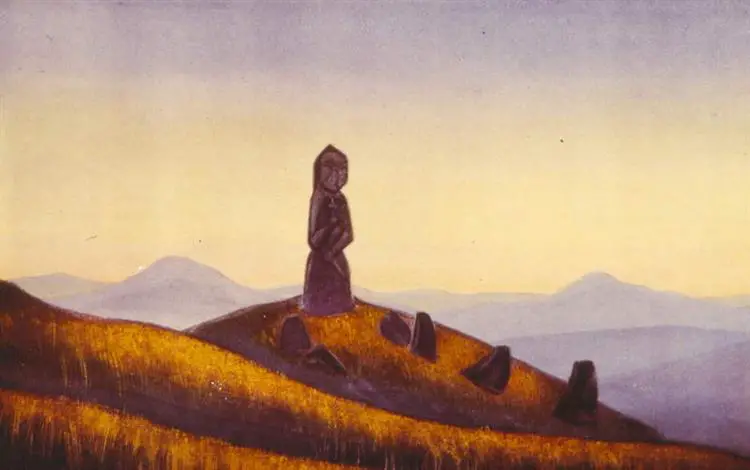
Regarding the journey to the Gates of Shamballa, other information regarding the location of Shamballa with the Gobi desert can be found in the writings of HP Blavatsky. For Nicolas Roerich the hidden placeShamballa, had an exact geographical position.
Certain indications, hidden by the symbols, indicated the site of Shamballa in the Pamir, Turkestan and Gobi […] however, let's not forget that the Kyrgyz people of the Kun Lun mountains also live in huts and take care of cattle breeding.
These places, according to N. Roerich, were mentioned because near Shamballa people lived in huts and engaged in cattle breeding. The Kun Lun was mentioned by Roerich more than once in relation to those places of orientation that referred to the Hidden Country. This ridge was also featured in the legends of the men of ancient faith they spoke of pilgrimage in search of Belovodye. This route geographically deciphered by Roerich was part of that of the expedition to Central Asia.
Why was that itinerary chosen? On the stretch of Sikkim there were ancient monasteries. N. Roerich met lamas, had long conversations with their priors. The legends originated from the sacred Kanchenjunga, known as the Mountain of the Five Treasures. An unknown reality lay behind these legends. The Russian painter was in contact with this reality and reflected it in the canvases painted in Sikkim. Reality itself resembled legend. The final itinerary of the expedition to Central Asia was drawn up there, in Sikkim. N. Roerich, was interested in finding traces of the migratory paths of ancient peoples from west to east and vice versa through the mounds, cave paintings and more. He wanted to be the first Westerner to paint and document the vast mountain ranges of India, Tibet and Central Asia and seek to discover treasures long hidden by the desert sands.
It is understandable why the route of Roerich's first great expedition to Central Asia draws a noose, a ring, around the desert or former Gobi Sea, exploring the mountains that surround the desert.
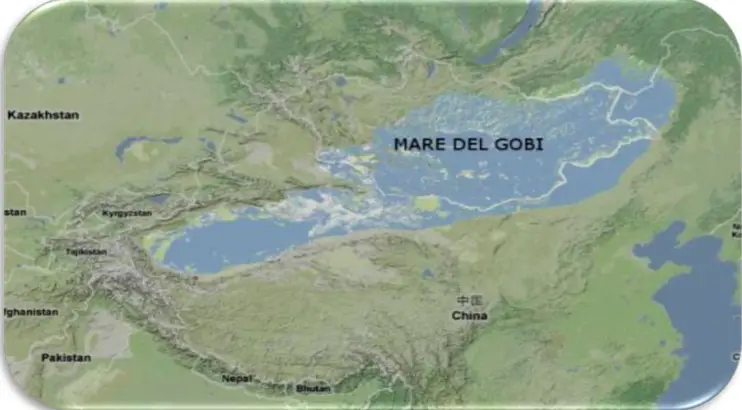
The secrets of the Gobi desert
The tundras of the north and the Gobi desert hide treasures, but would it be well done to hurry to reveal them? Only a high level of consciousness would be able to deal with such precious values. Knowing the spiral of evolution, no diamonds are thrown under the chariot wheels.
Where there are now only salt lakes and the desolate deserts of the Gobi, Takla Makan, Tsaidam and Zungaria, there was a vast inland sea that stretched over Central Asia. This sea remained until the last great glacial period, when about 12.000 years ago a local cataclysm swept away the waters in the South and West, forming a large and isolated desert, leaving an oasis, with a lake and an island in the center. The Sahara desert was formed in the same way: at first an open sea, then it became a lake and finally it dried up leaving only the sands. In this sea, there was a splendid White Island (Shveta-Dvipa), above which the city of Shamballa was built, which for its beauty was unrivaled in the world [...] was inhabited by the last remnants of the race that preceded our : mystically called the Sons of the Mist of Fire. […] The island in the Gobi Sea with its remains of a splendid civilization still exists today as an oasis surrounded by sands that have not been trampled by human feet.
Communications with the White Island, HP Blavatsky informs us, they were done through underground passages, which communicated in all directions, the island is now covered by the sands of the Gobi. The sands of the Gobi desert move continuously pushed by terrible gusts of wind that blow continuously. The legends, the local traditions tell that in the distant past there was the seat of one of the richest empires in the world. Marco Polo in describing the Gobi Desert he wrote that there were sounds, sometimes songs and sometimes moans that inspired terror in travelers. In any case, the sands of the Gobi Desert are also known as sands that sing, a natural phenomenon for scientists. The location of Shambhala in the Gobi desert described by HP Blavatsky is not surprising, as the Mongols, including the Buryats of Siberia and the Kalmyks of the lower Volga region, were strong followers of Tibetan Buddhism, particularly the teachings of the Kalachakra. For many centuries, Mongols around the world have believed that Mongolia is the land north of Shambhala.
N. Roerich in 1935 painted what he saw in the Gobi Desert, in Mongolia, in front of small menhirs: a stone sculpture, which depicts a guardian, with a Goblet decorated with fire placed in his left hand. N. Roerich admitted that at times a chalice was a symbol of fire, and could not be connected with the concept of a burial ritual. The chalice is connected to the Grail and to the stone of heaven Cintamanitherefore, the sculpture of the guardian with the chalice is an indication and a warning: you are in a protected sacred place.
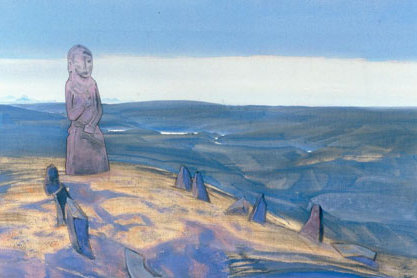
N. Roerich bore witness with his paintings every time he was in front of a work of art because he was aware that what he had admired one day was no longer possible for the destructive work of men. The destruction of the huge statues in Bamiyan by the Taliban fanatics sadly confirms the fears of N. Roerich.
[…] That a priceless statue can be destroyed by a fanatic, or a monument by an ignorant - in all this there is an abysmal ferocity […] Leaving a precious monument in the desert, we often asked the guide, “will it be safe? " And, wise in experience, he shook his head: "It may be beasts, but hardly people."
Tradition has it that great riches, statues, weapons and artistic objects are hidden under the sands. None of the locals dares to touch the treasure as it is said to be under a powerful spell. The discovery would be paid for with death. Cruel spirits named Bahti, guard the places until the prescribed time for their rediscovery. These places, says Ms Blavatsky, are jealously guarded against any foreign intrusion. Marco Polo calls the Gobi desert, the Lop desert (near the city of Lop, today Charklik, near the salt lake of Lop Nur) or the Great Desert. Marco Polo tells us that it takes a year to cross it. Food and water are very scarce and you risk getting lost due to hallucinations and deceptive evil spirits, he wrote that:
It is an established and recognized fact that this desert hosts many evil presences, which push travelers to destruction with the most extraordinary illusions.
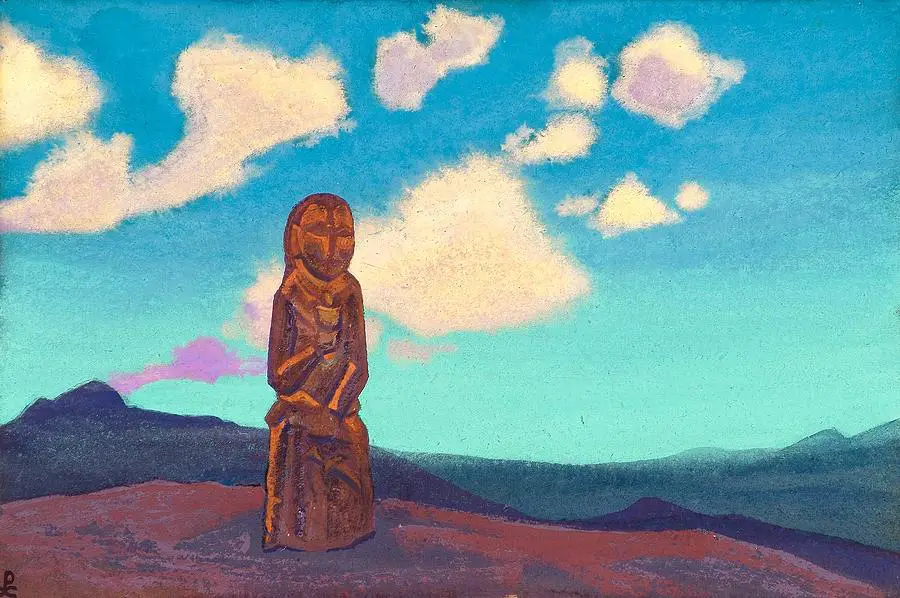
These spirits, or djinn,
sometimes they fill the air with the sounds of all kinds of musical instruments, and also of drums and the roar of weapons [...] when the man rides at night through the desert, this happens that if someone stays behind their companions to sleep or on the other hand, when he then wants to join them, he hears talking spirits in the air who resemble his companions and often hears himself called by his proper name and is sometimes misled so that he will never be found again; and many have already been lost in this way.
Gurdjieff, in 1898, after visiting the mystical community of Sarmung, located on the highlands of the Pamir where the Oxus River rises, he decided to explore the Gobi Desert. He didn't say what he discovered in the sands, he wrote that his group had devised a system to see what the windswept sands hid.
We asked them many questions and they revealed all kinds of beliefs regarding the Gobi Desert. In most of the stories it was stated that under the sands of the present desert villages and even entire cities were buried, with countless treasures and riches belonging to peoples who had inhabited the once prosperous region. The place where these riches were, it was said, was known by some men of the neighboring villages; was a secret that was handed down from father to son, under the bond of the oath, and anyone who violated this oath had to suffer a special punishment […] which many had experienced […] more than once there was an allusion to a certain region of the desert, where a large city was buried.
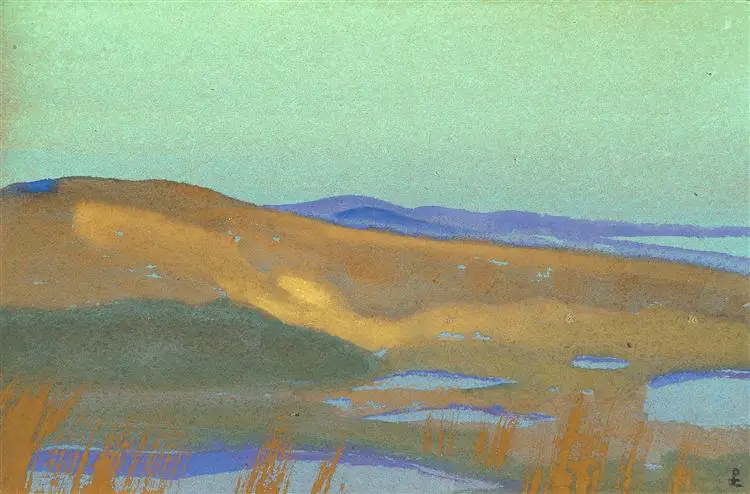
N. Roerich in 1927 during his expedition to Central Asia, returning from Mongolia, crossed the Gobi desert. On his way to the Tibetan plateau he arrived inarid Qaidam or Tsaidam basin, bordered between the Altyn Tagh mountains that separate it from Taklamakan and the Kun Lun mountains that separate it from the Tibetan plateau.
Who remembers the splendid lords of Atlantis now? Only at the swamps of Tsaidam can images of the radiant cities of that time still be seen.
Qaidam (Tsaidam) Mongolian name meaning "Salt marsh" - a quarter of the basin is, in fact, covered by lakes and by soft salt coasts, dangerous because it is easy to sink. Qaidam is also home to Lake Qarhan, which contains 60 billion tons of salt. N. Roerich in 1929 painted the Qaidam swamps and the places seem to be those of recent discoveries in the Tsaidam desert. In 1996, near the city of Delingha, near the slopes of Mount Baigong inside three caves, a series of metal tubes embedded in the rock, one of which is 40 cm in diameter, were discovered which date back to a period including between 70.000 and 150.000 years ago. To accentuate the mystery of the place, there is one at the foot of the hill expanse of stones that resemble Menhirs and to those ancient burials that N. Roerich perpetuated in the painting Kereksury.
The Gobi Desert was once a sea, around which civilizations flourished and thrived. At the end of the nineteenth century HP Blavatsky in the preface of the Secret Doctrine wrote that:
The now desolate and waterless regions of the Tarim - a true desert in the heart of Turkestan - were formerly covered by rich and flourishing cities [...] The gigantic continuous wall of mountains that surrounds the whole plateau of Tibet, from the upper reaches of the Khuan-Khe River in the hills of the Karakoram, has seen a civilization spanning millennia that could tell strange secrets to mankind. The eastern and western parts of these regions - the Nan-Shan and the Altyn-Tagh - were once covered with cities that might have rivaled Babylon. An entire geological period has passed on that land since those cities disappeared, as evidenced by the mounds of quicksand and the now barren and dead soil of the immense central plains of the Tarim Basin. Within these sand plateaus there is water and fresh and flourishing oases [...] some completely inaccessible [...] Built deep in the bowels of the earth, the underground warehouses are safe; and as their entrances are hidden, there is no danger of them being discovered, even if numerous armies should invade the sandy deserts.

So deep was his devotion to the memory of HP Blavatsky that N. Roerich painted "The Messenger" dedicated to her in 1925 and personally brought it to Adyar, the international headquarters of the Theosophical Society. Helena Roerich states that HP Blavatsky was a messenger of the White Brotherhood of Shambhala.
HP Blavatsky was undoubtedly an ardent messenger of the White Brotherhood, and it is absolutely certain that she brought reliable knowledge. Certainly of all theosophists, only Blavatsky had the privilege of receiving the Teaching directly from the Great Masters in one of their Ashrams in Tibet. She was the great spirit who accepted the bitter task of transmitting to humanity, lost in dead dogmas and on the path of atheism, the impulse to study the great sacred doctrine of the East. In fact, only through HP Blavatsky was it possible to approach the White Brotherhood, because she was the link to the Hierarchical Chain.
The Orientalist scholar David Reigle shows that for HP Blavatsky the Teaching Instructors were indeed affiliated Vajrayana Buddhism, And the Kalachakra Tantrathey were also affiliated with a more secret tradition, not limited to Tibet or Buddhism alone. The metaphysics present in the Secret Doctrine by HP Blavatsky and his teachers do not belong to the Gelugpa School of the Yellow Caps, school to which both the Dalai and the Panchen Lama belong. A closer affinity with the Jonangpa school, and with smaller traditional persecuted groups, has been suggested.
Yet the origins of HP Blavatsky's teaching are not in Tibet, or at least, not in the Tibetan language. It will be remembered that most of the Tibetan scriptures were translated from Sanskrit. The original source may be in a different language, which HP Blavatsky calls Without. The work undertaken by HP Blavatsky was continued by the Roerichs: they both worked to create a bridge between East and West and to affirm a research methodology that we can now define as “holistic”.
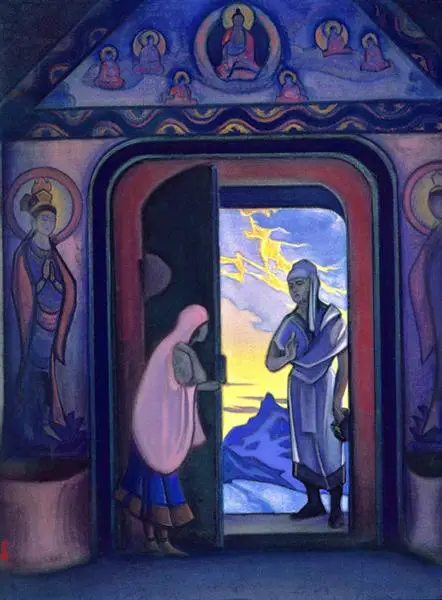

4 comments on “Roerich, Gurdjieff, Blavatsky: the secrets of the Gobi desert"